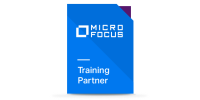The administrator of personal data is Compendium - Centrum Edukacyjne Spółka z o.o. with headquarters in Krakow, ul. Tatarska 5,30-103 Kraków, e-mail: compendium@compendium.pl.
In matters related to your data, you can contact the appointed Data Protection Officer, e-mail and iod@compendium.pl, or by writing to the correspondence address of Compendium - Centrum Edukacyjne Spółka z o.o. ul. Tatarska 5, 30-103 Krakow
The data will be processed in order to send commercial and marketing information and send the newsletter on the basis of expressed consent.
Data can be shared:
- Compendium employees and co-workers - Centrum Edukacyjne Spółka z o.o., who must have access to personal data to process your order or service
- entities processing data on behalf of Compendium - Centrum Edukacyjne Spółka z o.o., eg by post, courier, professional carrier,
- authorized state bodies, including supervisory authorities, within the scope of their powers.
The data will be stored for the duration of the order and after-sales services, and if this period can not be determined - until you express your objection.
You have the right to access your personal data, rectify it, delete or limit processing.
You have the right to object to further processing, and if you agree to the processing of data for its withdrawal. The exercise of the right to withdraw consent does not affect the processing that took place until the consent was withdrawn.
You also have the right to transfer data..
Please be advised that your personal data will not be profiled.
You have the right to lodge a complaint with the supervisory body of the President of the Office for Personal Data Protection in the case of processing your personal data in a manner that violates the provisions of the GDPR.

